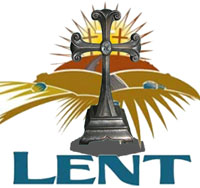|
|
 |
By George Aramath, Malankara World Board Member
Great Lent in the Syriac Orthodox Church starts with evening prayer on the 1st Sunday (Wedding of Cana) and concludes with the Holy Kurbana/Mass on 8th Sunday (Resurrection/Easter).
1. How do I take part in Great Lent?
Great Lent combines dietary restrictions and fasting. Dietary restrictions include avoiding fish, meat, wine, eggs and dairy products. Fasting is up to the ninth hour (approximately 3 p.m., when Christ's suffering on the Cross ended) on weekdays, and until noon (12 p.m.) on Saturday’s and Sunday’s.
Note: Nursing mothers, the sick, and the infirm have been exempted from these requirements. Plus, the extent of following these practices should be balanced with individual circumstances. At the very least, dietary restrictions should be observed.
2. Is Great Lent only about dietary restrictions? Is there something more?
Physical fasting is meaningless if it is disconnected from spiritual growth. When one fasts, their negative state of hunger is transformed by prayer and meditation into His positive presence. For a detailed explanation, see the following page: Purpose of Great Lent
3. Besides dietary restrictions, what prayers are said during Great Lent?
The Church’s canonical prayers for Great Lent are said at least three times a day in the morning, noon and evening [Lenten Prayers]. These prayers are marked by prostrations. This is done by kneeling down, touching the ground with the forehead, then standing up and making the sign of the cross.
Furthermore, the noon prayers of Great Lent are marked by 40 prostrations. This is done with four sets of ten prostrations.
The first set is accompanied by chanting “Kurielaison”
Second set: “Lord have mercy upon us”
(Syriac: Moran esraham melain)
Third set: “Lord be kind and have mercy”
(Syriac: Moran hoos raham melain)
Final set: “Answer Lord and have mercy”
(Syriac: Moran annino raham melain)
[See video of noon prayer in Syriac: Syriac Orthodox Monastery of Mar Afrem in Syria]
4. How are each of the days/weeks set up during Great Lent?
Great Lent starts with Forgiveness Service on Monday after noon prayer. It is a beautiful ceremony of preparation, involving the act of forgiveness, marked by forty prostrations, and the kiss of peace.
Thereafter, each succeeding Sunday of Great Lent is based upon a specific miracles performed by Our Lord.
The final week of Great Lent is known as the Passion Week (or Holy Week), which begins on Palm Sunday, followed by Passover on Thursday, Good Friday, Saturday of Good Tidings, and finally Easter.
--------------------------------------------------------------------------------
Explanation of each Service during Great Lent with songs and video:
1st Sunday: Wedding at Cana
1st Monday: Forgiveness Service
2nd Sunday: Healing of Leper
3rd Sunday: Healing of Paralytic
4th Sunday: Healing of Canaanite Woman
Mid-Lent: Exaltation of the Cross
5th Sunday: Crippled Woman/Good Samaritan
6th Sunday: Healing of Blind Man
40th Day (Friday): Christ’s Triumph Over Satan
Holy (Passion) Week:
7th Sunday: Palm Sunday
Passover (Thursday)
Good Friday
Saturday of Good Tidings
8th Sunday: Easter
**[Special thanks to Mathew GM and his site for information]**
See Also:
Why Great Lent? What's the purpose? How do I take part? by George Aramath
Is it possible to observe the Great Fast/Lent in our current culture? What's the point of it anyway? It seems like an ancient practice irrelevant today.
Great Lent Home | Sermons Home | General Sermons and Essays | Articles Home | Library - Home | Baselios Church Home
-------
Malankara World
A service of St. Basil's Syriac Orthodox
Church, Ohio
Copyright © 2009-2020 - ICBS Group. All Rights Reserved.
Disclaimer
Website designed, built, and hosted by
International Cyber Business Services, Inc., Hudson, Ohio